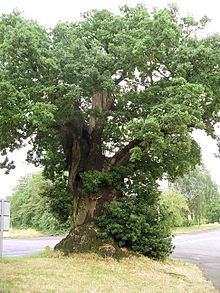
Quercus robur (Latin quercus, "oak" + robur "strength, hard timber"), commonly known as common oak, pedunculate oak, European oak or English oak, is a species of flowering plant in the beech and oak family, Fagaceae. It is native to most of Europe west of the Caucasus. The tree is widely cultivated in temperate regions and has escaped into the wild in scattered parts of China and North America.
It is a long-lived tree, with a large wide spreading crown of rugged branches. While it may naturally live to an age of a few centuries, many of the oldest trees are pollarded or coppiced, both pruning techniques that extend the tree's potential lifespan, if not its health.
Within its native range the European Oak is valued for its importance to insects and other wildlife. Numerous insects live on the leaves, buds, and in the acorns. It supports the highest biodiversity of insect herbivores of any British plant: more than 400 species.
The tree's attraction to me as a furniture designer and maker is the quality, colour and texture of the timber varying in colour from light brown to a dark tan with overtones of green. The grain can be regular and straight or filled with character, twists and swirls.
This diversity of grain structure lends itself to different design qualities: to impart a sense of order and calm I would choose a more regular grain pattern; dramatic grain structures would be used when creating flamboyant designs.
The choice of this timber echoes its use in furniture making over the generations. With durability, integrity and quality being its hall mark. These values I endeavour to incorporate into my designs.
|

